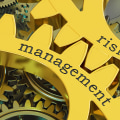It is essential for organizations to assess the potential risks and impacts of any action they take. Failing to do so can lead to costly consequences, from financial losses to violations of compliance regulations. As such, it is important for organizations to have a comprehensive understanding of how to assess risks and impacts of their decisions. This article will provide an overview of the risk and impact assessment process, as well as discuss best practices for successful implementation. The risk assessment process is a crucial part of HIPAA security risk analysis.
It involves evaluating potential risks associated with the use of PHI (Protected Health Information) and developing plans to mitigate those risks. This process involves identifying potential risks, assessing the likelihood and severity of each risk, and determining the appropriate actions to take in order to reduce or eliminate those risks. Additionally, organizations need to consider the impact of their decisions, such as on patient privacy, cost, and other factors. This article will cover the fundamentals of risk and impact assessment, including the key components of the process, best practices for successful implementation, and strategies for mitigating risks. In addition, it will explore the importance of having a comprehensive understanding of the risks and impacts associated with any decision an organization makes. When assessing risks and impacts, it is important to consider the following factors: potential severity of harm, probability of occurrence, likelihood of detection, and potential for mitigation.
Additionally, it is important to consider the potential cost of not taking action, as well as the cost of taking action. The risk assessment process involves identifying potential risks and evaluating their severity. This can be done through interviews, surveys, focus groups, or other research methods. Once potential risks have been identified, they should be evaluated in terms of severity, probability of occurrence, likelihood of detection, and potential for mitigation.
This can help to identify any areas that require additional attention or resources. Once potential risks have been identified and evaluated, it is important to use the results to inform decision-making. The results should be used to develop strategies for managing or mitigating identified risks. Additionally, it is important to monitor and review risk assessments on an ongoing basis in order to ensure that decisions are based on up-to-date information. It is also beneficial to keep records of risk assessments, including the results of the assessment and any actions taken in response. In conclusion, risk assessment is a critical part of any business operation.
By considering potential risks and impacts, organizations can make informed decisions that will benefit the organization. Risk assessments should be conducted regularly in order to ensure that decisions are based on up-to-date information. Additionally, strategies should be developed for managing or mitigating identified risks.
The Risk Assessment Process
The risk assessment process involves identifying potential risks and evaluating their severity. This can be done through interviews, surveys, focus groups or other research methods.Once potential risks have been identified, they should be evaluated in terms of severity, probability of occurrence, likelihood of detection and potential for mitigation. When assessing the severity of a risk, it is important to consider the financial and operational impacts as well as the reputational damage it could cause. The probability of occurrence should be based on factors such as the likelihood of a certain event occurring, the frequency of similar events in the past, and the vulnerability of the organization to such threats. The likelihood of detection helps to quantify the speed at which the organization can detect and respond to a risk.
Finally, the potential for mitigation should be assessed in order to determine what measures can be taken to reduce the likelihood or impact of a risk. By thoroughly assessing risks and impacts, organizations can make informed decisions and take appropriate action to protect their assets and operations.
Using Results To Inform Decision-Making
Once potential risks have been identified and evaluated, it is important to use the results to inform decision-making. By assessing risks and impacts in a comprehensive and rigorous manner, organizations can make more informed decisions that can reduce their overall risk exposure. When using the results of a risk assessment to inform decision-making, it is important to consider how the results will be used and the implications for the organization.For example, the results may suggest that certain strategies should be implemented in order to reduce the risk or impact of a particular issue. It is also important to consider the costs associated with implementing any proposed strategies and whether they are worth the potential benefit. It is also important to ensure that the results of the risk assessment process are communicated clearly to all stakeholders. This helps to ensure that everyone is aware of potential risks and the strategies being employed to mitigate them. Additionally, it is important to ensure that everyone understands the importance of regularly monitoring and reviewing risk assessments in order to stay up-to-date with changes in risk levels. By assessing risks and impacts in a comprehensive manner, organizations can make more informed decisions that can reduce their overall risk exposure.
Additionally, using the results of risk assessments to inform decision-making can help organizations identify potential opportunities for improvement and develop strategies that will reduce their overall risk profile.
What To Consider When Assessing Risks and Impacts
When assessing risks and impacts, it is important to consider a variety of factors in order to make informed decisions. These include the potential severity of harm, probability of occurrence, likelihood of detection, and potential for mitigation. Additionally, it is important to consider the cost of not taking action as well as the cost of taking action. The severity of harm is an important factor to take into consideration when assessing risks and impacts. This includes the potential physical, economic, or psychological damage that could result from an action or decision.It is important to assess the potential consequences of the risk and determine if they are worth taking. The probability of occurrence is also important to consider when assessing risks and impacts. This refers to the likelihood that an event or consequence will occur if an action or decision is taken. It is important to consider the likelihood of the risk happening, in order to weigh its potential impact. The likelihood of detection is another factor to consider when assessing risks and impacts. This refers to the chance that a risk or consequence will be identified before it occurs or after it has occurred.
If the risk is not likely to be detected, it is important to assess the potential damage it could cause and decide whether or not it is worth taking. Lastly, it is important to consider potential for mitigation when assessing risks and impacts. This refers to the ability to reduce or eliminate a risk by taking certain preventative measures or actions. It is important to assess the potential for mitigation, in order to decide if taking action is worth the cost. In conclusion, when assessing risks and impacts, it is important to consider the potential severity of harm, probability of occurrence, likelihood of detection, and potential for mitigation. Additionally, it is important to consider the cost of not taking action as well as the cost of taking action. Organizations should consider a variety of factors when assessing risks and impacts, such as potential severity of harm, probability of occurrence, likelihood of detection, potential for mitigation, and cost implications.
Doing so can help organizations develop strategies for managing and mitigating identified risks, and make informed decisions that will benefit the organization. Risk assessment is an important part of any business operation and should be taken seriously.








Leave Message